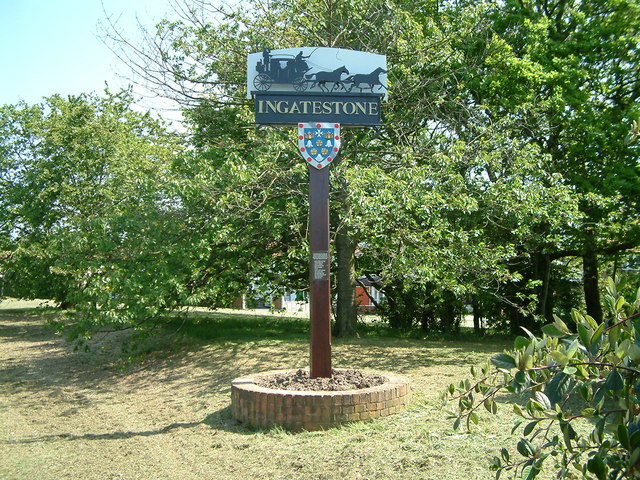|
Henry FitzRoy, 1st Duke Of Richmond And Somerset
Henry FitzRoy, Duke of Richmond and Somerset, (15 June 1519 – 23 July 1536), was the son of King Henry VIII of England and his mistress, Elizabeth Blount, and the only child born out of wedlock whom Henry VIII acknowledged. He was the younger half-brother of Queen Mary I, as well as the older half-brother of Queen Elizabeth I and King Edward VI. Through his mother, he was the elder half-brother of the 4th Baroness Tailboys of Kyme and of the 2nd and 3rd Barons Tailboys of Kyme. He was named FitzRoy, which is derived from the Norman French term for "son of the king". Birth Henry FitzRoy was born in June 1519. His mother was Elizabeth Blount, Catherine of Aragon's lady-in-waiting, and his father was Henry VIII. FitzRoy was conceived when Queen Catherine was approaching her last confinement with another of Henry's children, a stillborn daughter born in November 1518. To avoid scandal, Blount was taken from Henry's court to the Augustinian priory of St Lawrence at Blac ... [...More Info...] [...Related Items...] OR: [Wikipedia] [Google] [Baidu] |
His Grace
His Grace or Her Grace is an English Style (manner of address), style used for various high-ranking personages. It was the style used to address English monarchs until Henry VIII and the Scottish monarchs up to the Act of Union (1707), Act of Union of 1707, which united the Kingdom of Scotland and the Kingdom of England. Today, the style is used when referring to archbishops and non-royal dukes and duchesses in the United Kingdom. Examples of usage include His Grace The Duke of Norfolk; His Grace The Lord Archbishop of Canterbury; or "Your Grace" in spoken or written address. As a style of Dukes in the United Kingdom, British dukes it is an abbreviation of the full formal style "The Most High, Noble and Potent Prince His Grace". Royal dukes, for example Prince Edward, Duke of Kent, are addressed with their higher royal style, Royal Highness. The Duchess of Windsor was styled "Your Grace" and not Royal Highness upon marriage to Prince Edward, Duke of Windsor. Ecclesiastical usage ... [...More Info...] [...Related Items...] OR: [Wikipedia] [Google] [Baidu] |
Mistresses Of Henry VIII
The mistresses of Henry VIII included many notable women between 1509 and 1536. They have been the subject of biographies, novels and films. Confirmed mistresses *Elizabeth Blount, Elizabeth or Bessie Blount, mother of his illegitimate son, Henry Fitzroy, 1st Duke of Richmond and Somerset, Henry Fitzroy, to whom Henry VIII gave the dukedoms of Duke of Somerset, Somerset and Duke of Richmond, Richmond. Fitzroy, which means ''son of the king'' was acknowledged by Henry and there was talk in the 1530s that the King, who then had no male heir, would legitimise Fitzroy. *Mary Boleyn, sister of Anne Boleyn. It was rumoured that one or both of Mary's children were fathered by the King, although no evidence exists to support the argument that either of them was the King's biological child. Mary is often considered to be Henry's favourite mistress. *Madge Shelton, Margaret "Madge" Shelton, first cousin of Anne Boleyn. According to Imperial ambassador Eustace Chapuys, the King had an affair ... [...More Info...] [...Related Items...] OR: [Wikipedia] [Google] [Baidu] |
Ingatestone
Ingatestone is a village and former civil parish in Essex, England, with a population of 5,365 inhabitants according to the 2011 census. Just north lies the village of Fryerning, the two forming now the parish of Ingatestone and Fryerning. Ingatestone lies in the Metropolitan Green Belt 20 miles (32 km) north-east of London. Its built-up area straddles the A12 trunk road and the Great Eastern Main Railway Line. It has become an affluent commuter village, seen as one of the UK's best places to live by the Sunday Times in 2020. History Ingatestone appeared in Saxon times on the Essex Great Road (now the A12) between the Roman towns of Londinium (London) and Camulodunum (Colchester). The name means "Ing at the Stone", the suffix distinguishing it from nearby settlements that also formed part of the manor of Ing. It is first recorded in 1283 as ''Gynges atte Ston''. Stone is not prevalent in the local geology. The village stone, deposited by glacial action, is unusual for t ... [...More Info...] [...Related Items...] OR: [Wikipedia] [Google] [Baidu] |
Augustinian Priory
Augustinians are members of Christian religious orders that follow the Rule of Saint Augustine, written in about 400 AD by Augustine of Hippo. There are two distinct types of Augustinians in Catholic religious orders dating back to the 12th–13th centuries: * Various congregations of Canons Regular also follow the Rule of Saint Augustine, embrace the evangelical counsels and lead a semi-monastic life, while remaining committed to pastoral care appropriate to their primary vocation as priests. They generally form one large community which might serve parishes in the vicinity, and are organized into autonomous congregations. * Several orders of friars who live a mixed religious life of contemplation and apostolic ministry. The largest and most familiar is the Order of Saint Augustine (OSA), founded in 1244 and originally known as the Hermits of Saint Augustine (OESA). They are commonly known as the Austin Friars in England. Two other orders, the Order of Augustinian Recollects and ... [...More Info...] [...Related Items...] OR: [Wikipedia] [Google] [Baidu] |
Children Of Henry VIII
Henry VIII of England had several children. The best known children are the three legitimate offspring who survived infancy and would succeed him as monarchs of England successively, Edward VI, Mary I and Elizabeth I. His first two wives, Catherine of Aragon and Anne Boleyn, had several pregnancies that ended in stillbirth, miscarriage, or death in infancy. Henry acknowledged one illegitimate child, Henry FitzRoy, as his own, but is suspected to have fathered several illegitimate children by different mistresses. The number and identity of these is a matter of historical debate. There are many theories about whether Henry VIII had fertility difficulties. His last three wives, Anne of Cleves, Catherine Howard and Catherine Parr are not known to have conceived by him, although Parr conceived in her next marriage. None of Henry's acknowledged children (legitimate or otherwise) had children of their own, leaving him with no direct descendants after the death of Elizabeth in 1603. ... [...More Info...] [...Related Items...] OR: [Wikipedia] [Google] [Baidu] |
Catherine Of Aragon
Catherine of Aragon (also spelt as Katherine, ; 16 December 1485 – 7 January 1536) was Queen of England as the first wife of King Henry VIII from their marriage on 11 June 1509 until their annulment on 23 May 1533. She was previously Princess of Wales as the wife of Henry's elder brother, Arthur, Prince of Wales. The daughter of Isabella I of Castile and Ferdinand II of Aragon, Catherine was three years old when she was betrothed to Prince Arthur, heir apparent to the English throne. They married in 1501, but Arthur died five months later. Catherine spent years in limbo, and during this time, she held the position of ambassador of the Aragonese crown to England in 1507, the first known female ambassador in European history. She married Arthur's younger brother, the recently ascended Henry VIII, in 1509. For six months in 1513, she served as regent of England while Henry VIII was in France. During that time the English crushed and defeated a Scottish invasion at ... [...More Info...] [...Related Items...] OR: [Wikipedia] [Google] [Baidu] |
Fitzroy
Fitzroy or FitzRoy may refer to: People As a given name *Several members of the Somerset family (Dukes of Beaufort) have this as a middle-name: **FitzRoy Somerset, 1st Baron Raglan (1788–1855) ** Henry Charles FitzRoy Somerset, 8th Duke of Beaufort (1824–1899) **Henry Adelbert Wellington FitzRoy Somerset, 9th Duke of Beaufort (1847–1924) ** Henry Hugh Arthur FitzRoy Somerset, 10th Duke of Beaufort (1900–1984) ** Henry FitzRoy Somerset, 12th Duke of Beaufort (born 1952), called Bunter Worcester *Fitzroy Alexander (1926–1988), better known as Lord Melody, a calypsonian from Trinidad * Sir Fitzroy Maclean (1911-1996), Scottish soldier, writer and politician As a surname * Fitzroy (surname), i.e. not the form FitzRoy Descendants of Charles II and Barbara Palmer * Anne Lennard, Countess of Sussex or Lady Anne Fitzroy (1661–1722), daughter of King Charles II of England and Barbara Palmer, 1st Duchess of Cleveland * Charles FitzRoy, 2nd Duke of Cleveland (1662–1730), son o ... [...More Info...] [...Related Items...] OR: [Wikipedia] [Google] [Baidu] |
Robert Tailboys, 3rd Baron Tailboys Of Kyme
Robert Tailboys (c. 1528 – c. 26 June 1542) was a younger son of Elizabeth Blount and Gilbert Tailboys, 1st Baron Tailboys of Kyme. Through his mother he was the half brother of Henry FitzRoy, 1st Duke of Richmond and Somerset, who was the only illegitimate offspring acknowledged by Henry VIII, King of England. Birth He was most likely the youngest child of Elizabeth Blount and her first husband Gilbert Tailboys. He was named Robert for his father's grandfather Robert Tailboys. His birth came between his elder brother's George's birth in 1524 and his father's death in 1530, therefore at the time of his death in 1542 he was still a minor. His birth was probably towards the end of the marriage since there is so little information known about him. Life Robert succeeded his brother George and was the last direct male line of the Tailboys. In his mother's Gower manuscript his signature is one of those that appears. Death It has been suggested that Robert Tailbois died from the unh ... [...More Info...] [...Related Items...] OR: [Wikipedia] [Google] [Baidu] |
George Tailboys, 2nd Baron Tailboys Of Kyme
George Tailboys (c. 1523 – c. 6 September 1540) was the eldest son of Elizabeth Blount and Gilbert Tailboys, 1st Baron Tailboys of Kyme. Through his mother he was the half brother of Henry FitzRoy, 1st Duke of Richmond and Somerset, who was the only illegitimate offspring acknowledged by Henry VIII, King of England. Birth George's birth date is unknown, as is the date or year of his parents' marriage. On 25 March 1539, George was stated to have been sixteen years old. This would mean that he was born between April 1522 and March 1523. He was named George for his paternal grandfather Sir George Tailboys. Siblings George, as the heir of his father, was the eldest surviving son. The evidence of Gilbert and Elizabeth's children are obscure; they seem to have had five or six. In 1805 when the church of South Kyme, Lincolnshire, was being rebuilt, the vaults containing Gilbert's tomb were opened. Four lead coffins were found inside, below the monument erected by Elizabeth Blount: th ... [...More Info...] [...Related Items...] OR: [Wikipedia] [Google] [Baidu] |
Elizabeth Tailboys, 4th Baroness Tailboys Of Kyme
Elizabeth Tailboys, 4th Baroness Tailboys of Kyme () was the daughter of Elizabeth Blount and Gilbert Tailboys, 1st Baron Tailboys of Kyme, and the second wife of Ambrose Dudley, 3rd Earl of Warwick. Through her mother she was a half-sister of Henry FitzRoy, 1st Duke of Richmond and Somerset, the only illegitimate child acknowledged by Henry VIII, King of England. Early life Elizabeth was the only known daughter of Sir Gilbert Tailboys and his wife, also Elizabeth (''née'' Blount). She and two younger brothers, George and Robert, survived their father after his death in 1530, when Elizabeth was around nine years old. She also had a half-brother from her mother's former relationship with Henry VIII: Henry FitzRoy, who was a year or two older than her. There is some debate over her true paternity. She was born around 1520 so some historians posit she was another child of Henry VIII. First marriage Elizabeth was married to Thomas Wymbish, and they lived in Nocton, Lincolnshire. T ... [...More Info...] [...Related Items...] OR: [Wikipedia] [Google] [Baidu] |
King Edward VI
Edward VI (12 October 1537 – 6 July 1553) was King of England and King of Ireland, Ireland from 28 January 1547 until his death in 1553. He was crowned on 20 February 1547 at the age of nine. Edward was the son of Henry VIII and Jane Seymour and the first English monarch to be raised as a Protestant. During his reign, the realm was governed by a regent, regency council because he never reached maturity. The council was first led by his uncle Edward Seymour, 1st Duke of Somerset (1547–1549), and then by John Dudley, 1st Earl of Warwick (1550–1553), who from 1551 was Duke of Northumberland. Edward's reign was marked by economic problems and social unrest that in 1549 erupted into riot and rebellion. An expensive war with Kingdom of Scotland, Scotland, at first successful, ended with military withdrawal from Scotland and Boulogne-sur-Mer in exchange for peace. The transformation of the Church of England into a recognisably Protestant body also occurred under Edward, who took ... [...More Info...] [...Related Items...] OR: [Wikipedia] [Google] [Baidu] |
Queen Elizabeth I
Elizabeth I (7 September 153324 March 1603) was Queen of England and Ireland from 17 November 1558 until her death in 1603. Elizabeth was the last of the five House of Tudor monarchs and is sometimes referred to as the "Virgin Queen". Elizabeth was the daughter of Henry VIII and Anne Boleyn, his second wife, who was executed when Elizabeth was two years old. Anne's marriage to Henry was annulled, and Elizabeth was for a time declared illegitimate. Her half-brother Edward VI ruled until his death in 1553, bequeathing the crown to Lady Jane Grey and ignoring the claims of his two half-sisters, the Catholic Mary and the younger Elizabeth, in spite of statute law to the contrary. Edward's will was set aside and Mary became queen, deposing Lady Jane Grey. During Mary's reign, Elizabeth was imprisoned for nearly a year on suspicion of supporting Protestant rebels. Upon her half-sister's death in 1558, Elizabeth succeeded to the throne and set out to rule by good counsel. She ... [...More Info...] [...Related Items...] OR: [Wikipedia] [Google] [Baidu] |







